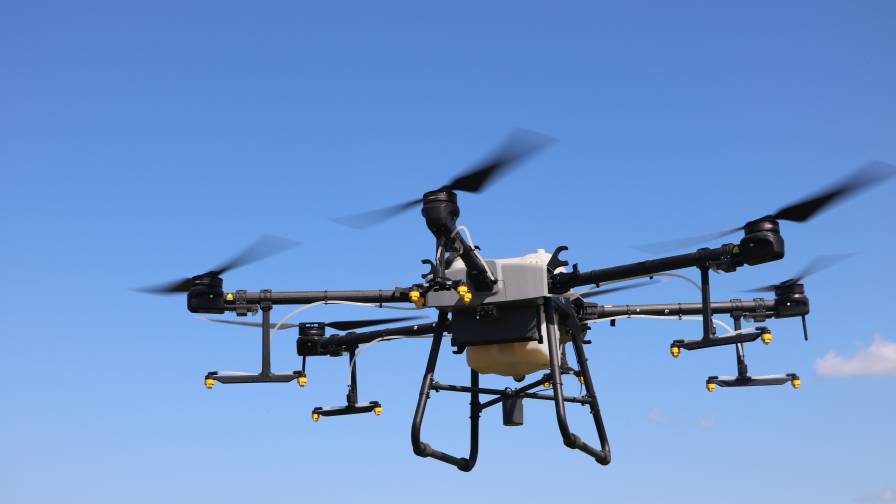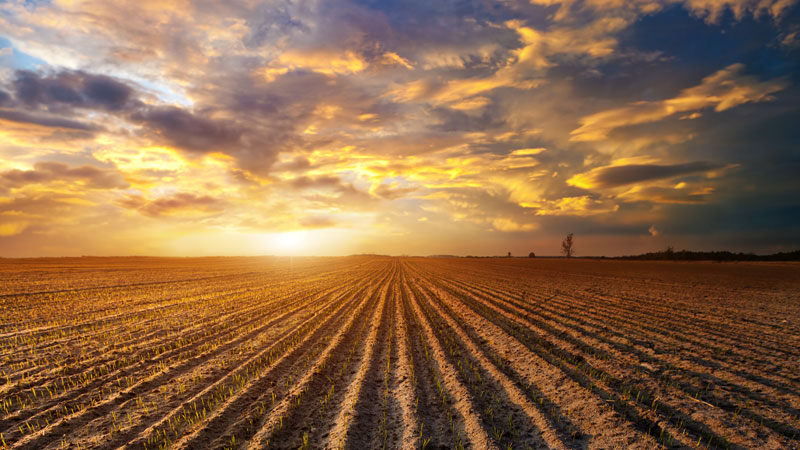Agricultural Drone Market Flying to Such Great Heights
Rantizo was founded in 2018 to provide drone-based custom application systems and services to the ag market. Although utilizing a flying leisure item for crop spraying was not widely accepted at the time, that attitude has changed drastically in intervening years.
Today, drones are less a flashy toy than another tool in the grower toolbox — an everyday item akin to a tiller or any other piece of farming equipment. Depending on the job, drones have become important implements for the nation’s producers, notes Ben Etsinger, Regional Sales Manager at Iowa-headquartered Rantizo.
“Ground machines aren’t meant to do half-acre applications, but drones are suited for them due to the size of the equipment and their tank size,” says Etsinger. “There are field sizes that make sense for a ground machine, so it’s about using the tool that makes the most sense for the job.”

This Rantizo drone performed a flying demonstration at the 2022 Midwest AG Industries Exposition (MAGIE) show last August.
Last year, Rantizo added 100 drones and pilots to its fleet while accessing 216% more acres than in 2021. Extreme weather events, including increased drought conditions and a 2020 derecho that devastated Iowa cornfields, displayed the device’s unique ability to cover all manner of land types.
Currently, Rantizo sells commercial unmanned aerial vehicles built by drone manufacturer DJI. With 10, 30, and 40 liters of liquid payload on board, Rantizo’s drones can cover about 6 to 26 acres an hour.
Making aerial applications safe, legal, and productive is about more than just top-notch equipment, adds Etsinger. Rantizo offers pilot training and insurance assistance, as well as expert navigation through oft-confusing Federal Aviation Administration (FAA) restrictions.
On the regulation end, Rantizo is fully licensed by the FAA to perform its services in Iowa along with about two dozen other states. Additionally, the company is approved to operate multiple drones simultaneously — a method called swarming. Rantizo is pushing another boundary in 2023 as it seeks FAA approval for drones above 55 pounds.
“Drones have proven themselves over the last three years,” Etsinger says. “The technology curve around battery performance and tank size is steep, and farmers have gotten to benefit from this superior technology over each growing season.”
A Host of Use Cases
Row crops such as corn, tomatoes, and potatoes comprise the bulk of Rantizo’s spraying suite. The company also sends drones when invasive species infiltrate forest and pasture areas as well as ponds and lakes.
Use cases for the devices have grown alongside the innovation itself. For example, saturated soil that would swamp a ground machine is ideal for equipment able to hover above the landscape. An average row crop drone package ranges in price from $32,000 to $40,000, providing a frugal yet useful alternative to traditional agricultural tools.
“Plus, growers can control the timing of the application,” Etsinger says. “If I have a work order into a third-party company, I have no control of when the product will get applied. If I own the equipment, I can make sure that application gets made when I need it to.”
Proper insecticide coverage, for instance, is critical before a pest reaches the next stage of its life cycle. Just as risky is waiting weeks for a third party to apply a fungicide, as mere days can make the difference between losing and saving a couple dozen bushels.
Drones require little manpower compared to manual work, saving labor costs, and increasing efficiency, says Heven Drones Founder and CEO Bentzion Levinson, whose Israel-based business launched its first hydrogen-powered commercial drone in February.
Levinson points to the vehicle’s ability to fly long distances — in the case of his company’s new hydrogen drones, over two hours before needing to refuel. Soil quality and precision crop-sowing are two crucial outcomes of smartly realized drone use, he says.
“This is in addition to reducing carbon emissions in the form of unnecessary sprays of chemical stimulants and crop protection solutions,” Levinson said in an email. “The agricultural space is actually very well suited for drones, seeing as the airspace has fewer obstacles. This means (rural) isn’t subject to the same regulatory challenges as urban areas.”
Supply Chain Help
Further, drones are a robust workaround for pandemic-related supply chain issues that hamstrung the pesticide market, says Rantizo’s Etsinger.
“Drones give you site-specific applications versus blanket applications across a field,” he says. “You can program an autonomous drone mission across 25 acres, meaning that you’ll be using 75% less chemistry.”
Rantizo continues to push ahead on a federal nod for larger drone types, along with a waiver for nighttime drone usage. However, the technology advances, the company, and its burgeoning portfolio of growers will be ready.
“Flight training is very hands-on,” says Etsinger. “Pilots are comfortable in the field because we can prepare them to make professional custom applications in a short period of time. That takes practice and real-world experience.”






